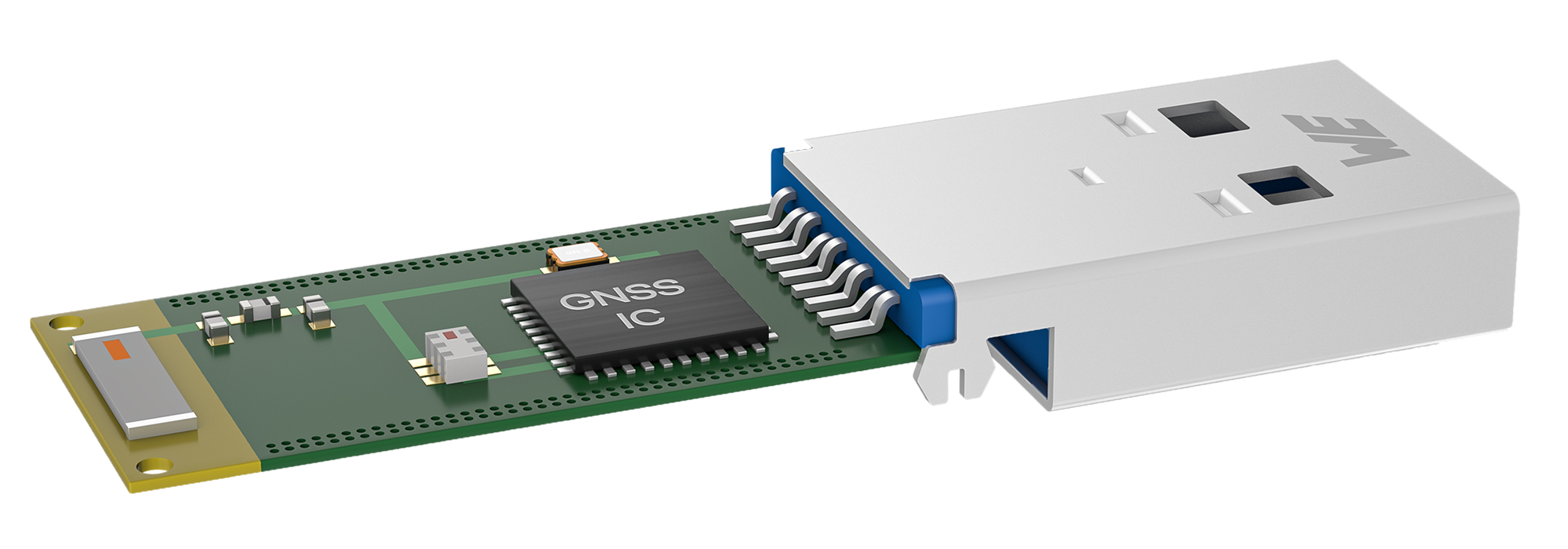Rod Antenna
Radio Module
A radio module with the appropriate radio protocol can be selected depending on the requirements for frequency, range, environmental conditions, data rates and available electrical power.
UMRF Connector
UMRF connectors offer electromechanical connections between PCBs in a small constricted space, efficient matching and EoL testing of the rod antenna.
Matching Circuit
The RF-inductors and -capacitors together build a matching circuit. Combining a Pi- and T-circuit in the PCB layout creates beneficial conditions for matching the chip antenna to possible influencing factors.
Do you need advice on selecting a matching circuit? Then visit our Design and Solution Service Antenna Matching.
ESD Protection
If externally mounted rod antennas are not safe to touch, electrostatic discharges (ESD) can occur via the rod antennas. Diodes are used for ESD protection to prevent failures and damage to the application caused by electrostatic discharges.
SMA Connector
The SMA coaxial connector connects the rod antenna to the PCB electromechanically.
Antenna
If a radio module is installed in a conductive casing, for example to protect it from EMC or to use a robust metal casing, the RF signal can be routed through the casing via SMA coaxial connectors. A rod antenna with an SMA connector is ideally suited for mounting on the casing.
IC Peripherals
Radio communication is implemented in the standard firmware of the radio modules, but not the final application. Applications therefore require an IC, for example a microcontroller, which requests sensor data and controls the radio module that transmits it.
Radio Module
Consider the recommended circuit and the PCB layout of the antenna feed line from the radio module data sheet.
UMRF Connector
Provide the footprint for a WR-UMRF connector on the feed line of the antenna immediately after the circuit of the radio module.
Antenna feed line
Design the feed line of the antenna to the impedance of 50 Ohm.
Keep the feed line of the antenna as short as possible.
Matching Circuit
Place the matching circuit as close as possible to the antenna and connect it to the radio module ground plane.
Design the matching circuit for component size 0402.
Antenna
Do not place any electroconductive planes, metals and batteries/accumulators in the immediate environment of the antenna.
Maximize the distance of the antenna to dielectric materials (e.g. casing).
Short Introduction to Rod Antenna
The overview shows typical components for the design of radio interfaces with rod antennas. This includes a rod antenna, connectors and matching network, as well as the radio module and ESD protection.
The generated near-field by the externally mounted rod antenna is significantly influenced by the immediate environment. The main influencing factors are metals, batteries/accumulators, casings and human bodies. The position of the rod antenna in relation to the PCB and the PCB size/geometry also affect the antenna characteristics. The PCB interacts together with the rod antenna and together they form the radiating structure. Due to the external placement, as well as its mechanical length, the rod antenna is proportionately tolerant to detuning by various influencing factors.
However, depending on the application, the rod antenna may be out of tune by the influencing factors as well as the PCB configuration. With the help of RF inductors and RF capacitors, which form a matching network, the rod antenna can be matched to the required frequency range.
Our Range of Services for Radio Modules and Antennas
Do you use our radio modules or antennas and would like technical advice? Then visit our Design and Solution Services:
Service Antenna Matching
Support Wireless Connectivity & Sensors



